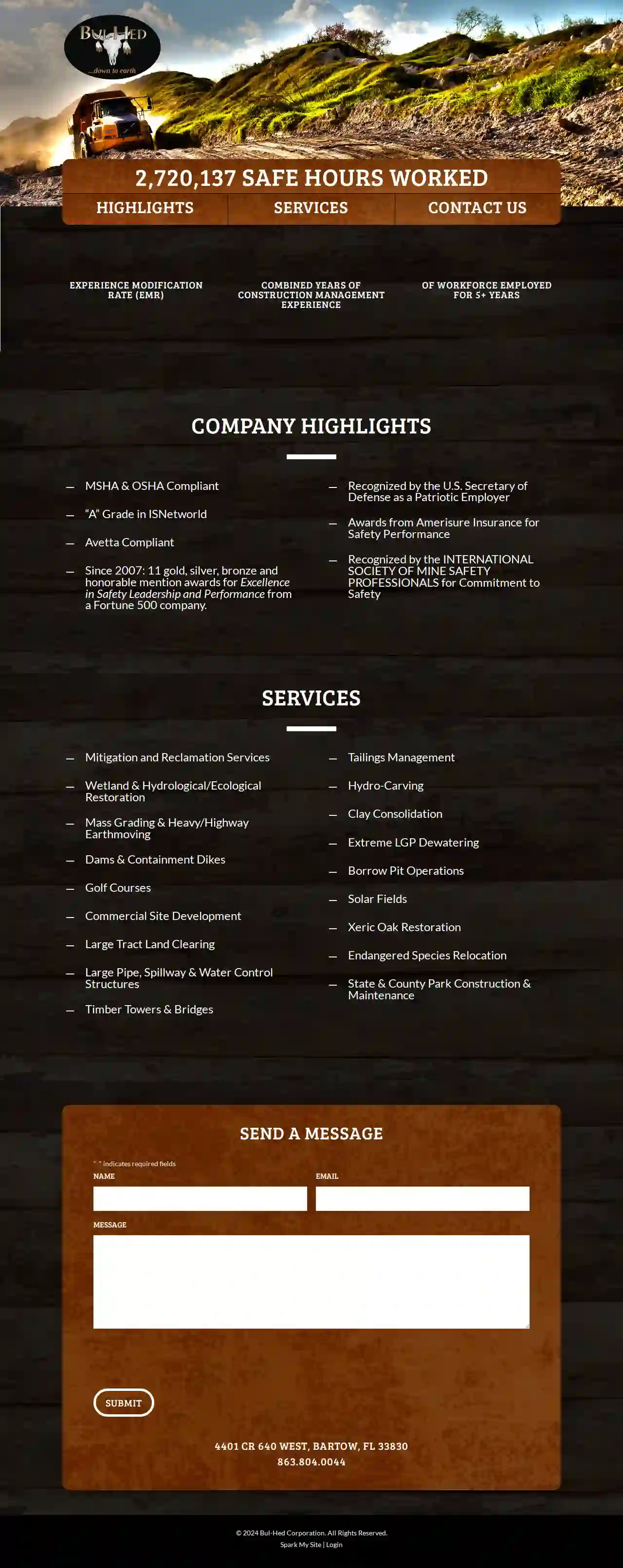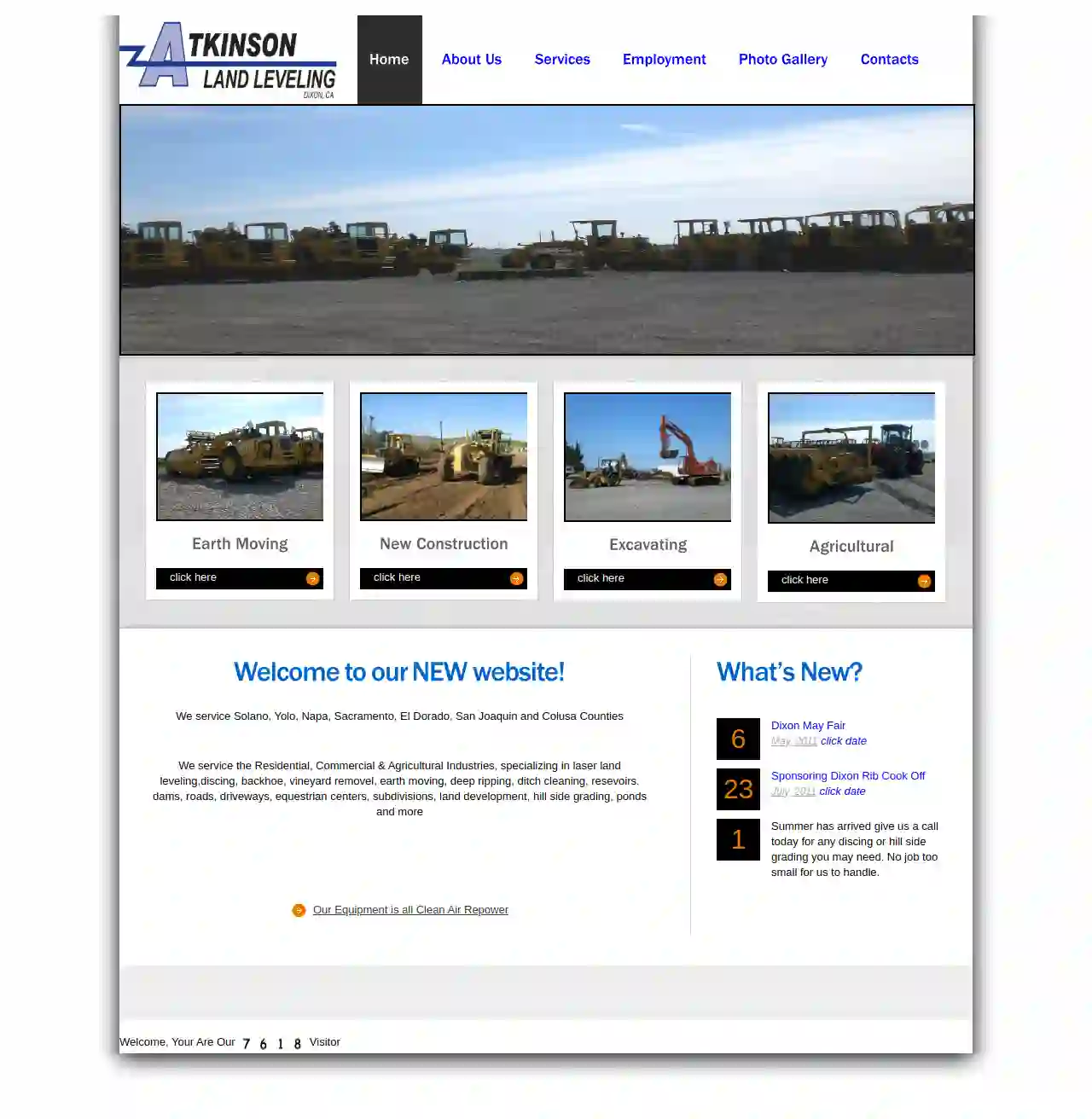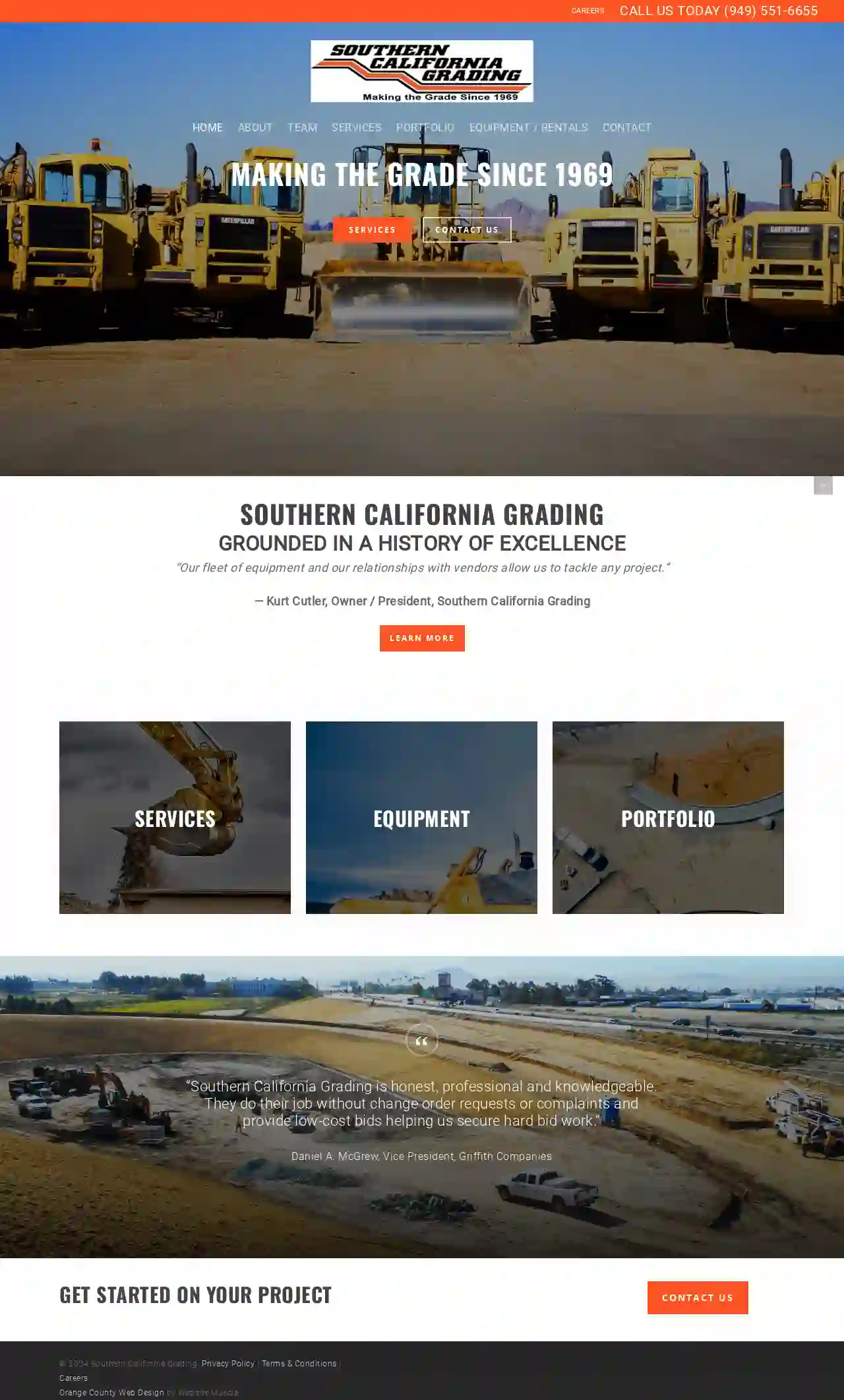Demolition Contractors Silver Lakes
Top 10 Demolition Contractors in Silver Lakes
Get multiple Demolition Companies quotes for your project today! Compare profiles, reviews, accreditations, portfolio, etc... and choose the best deal.

De Build Group
52 reviews1930 12th Ave, Oakland, 94605, USHigh-Quality Contractor We perform all work in accordance with any applicable building codes and professional industry standards, making your vision come true that's what we do. San Diego & San Fransico Area San Francisco Bay Area De Build Group Inc In the Build Group, our mission is to make your project come true, quality construction that lasts over time, at competitive prices throughout the Bay Area. Our Commitment to Quality 1. Architects And Engineering Work Together. 2. Professional workmanship 3. Using High durability materials High-Quality Workmanship At De Build Group Inc we put our client’s needs first to deliver a project on time at a fair price. We are a construction and remodeling company in Bay and San Diego Area that is focused on building relationships through high-quality products, expert services, and the best customer service in the industry. California License # 1046611B GENERAL BUILDING C-8 - CONCRETE C15 - FLOORING AND FLOOR COVERING C21 - BUILDING MOVING, DEMOLITION A - GENERAL ENGINEERING Free estimates We are Passionate Honest and Dependable Always Improving U.S. Certified Contractors Call Now Speak Live Expert! Home Remodeling, General Contractor, Demolition, & Landscaping New home build Importance of healthcare organizations dictates norms of design. Concrete contractor We Build Sidewalks, driveways patios with all quality requirements Foundation contractor We are a company that offers design and build services on a serious level. Deck contractor Ideal for your frontyard or backyard, red wooden decks are the best for your home Click to check out our Pavers Premium Pavers Blowout Pavers Patios Retain Walls Pool Decks Walkways Synthetic Turf Firepits Landscaping Design Outdoor Kitchens BBQ Islands Decks & Balconies Foundations Basements Framing Outdoor Kitchens Room Extentions Kitchen Remodels Bathroom Remodels Pavers Fences New Homes New Building High-Rises Warehouse Plazas Malls Apartments Buildings Excavations French Drains Gates Pavers Stamped Concrete Demolitions Sidewalks Approaches Curbs Asphalt Driveways Concrete roads Schools Certified Contractors in San Francisco Bay & San Diego Sidewalk & Approach Replacement Curb Cut & Replacement Deck Repair & Replacement Bathroom Remodel Stamped Concrete Driveway Driveway Installation & Replacement Raise Home & Garage Addition Synthetic Grass & Soil Turf Installation. All images are originals taken with permission of owners of properties. De Build Group reserves all rights to all images. Get a Fast Quote Now! Click Here Kitchen Remodeling Retaining Wall Replacement Foundation Repair, New Installation Fense Repair & Installation New Home Construction Paver Installation & Design Basement Repair & Installation Hardscape & Landscaping Click Here to speak to Live Expert! Se Habla Españols Find us on: Best Contractors in San Diego & San Francisco Bay Area San Diego El Cajon Chula Vista Oceanside Coronado Carlsbad Vista San Marcos Encinitas Nacional City San Marcos Escondido Imperial Valley Oakland San Jose Alameda Contra Costa Napa Marin San Fransico San Mateo Santa Clara Solano Sonoma Concord San Ramon Best Reviews In San Francisco Bay & San Diego Area Making Your Vision Come True, Thats What we Do +1500Projects completed 250Workers employed 100% Satisfaction guarantee De BuilD Group We perform all work in accordance with any applicable building codes and professional industry standards. Friendly customer service and precise field management deliver awesome final results. Make Your Vision Come True, That What We Do. Contact US 1930 12 Ave, Oakland CA, 94605 (510) 650-1145 (619) 762-4498 (408) 317-4966 Resources © 2023. All rights reserved by De Build Group
- Services
- Why Us?
- Gallery
Get Quote
Schreiber Excavating
53 reviews1767 Kenyon Road, Ontario, 14519, USSchreiber Excavating has a long history of happy clients across New York State. You can expect only the best in construction, utility installation, and trucking services from Dan and his team. Working at an expert level in construction requires highly trained workers and precision equipment. We use only the most advanced technologies to ensure safety, efficiency, and the best price possible. At Schreiber Excavating, our top priority is client satisfaction. You can expect a job well done—every time. Schreiber Excavating has a proven track record of delivering only the finest quality site work and utility services from initial conception to final product. Our highly trained team places safety first while maintaining a diligent focus throughout the entire process. You can trust Schreiber Excavating to make your construction a reality.
- Services
- Why Us?
- Testimonials
- Gallery
Get Quote
Roto-Rooter Plumbing & Water Cleanup
4.8275 reviewsRancho Cucamonga, USYour Local Roto-Rooter Plumber in Rancho Cucamonga, CA Roto-Rooter of Rancho Cucamonga is your trusted plumbing partner. We ride to the rescue 24/7, 365 days a year, to handle your most pressing plumbing needs, with our team of expert plumbers in Rancho Cucamonga to deliver a full range of services. From drain cleaning to complete sewer line repairs, we come fully licensed and insured for every plumbing challenge — and we serve both residential and commercial properties, no matter the size of the job. Roto-Rooter: America's Go-To Plumbing Provider Since 1935 Roto-Rooter has been America’s go-to, do-it-all plumbing provider since 1935. That’s why we're the premier plumber in Rancho Cucamonga, CA, with a long-standing reputation for quality that includes: Same day service 24/7 availability No hidden or extra charge for plumbing or drain service on holidays, nights, and weekends Onsite and upfront estimates Fully licensed, insured, experienced plumbers State-of-the-art diagnostics and equipment Senior and military discounts Coupons and financing options available We take pride in providing exceptional service to our customers in Rancho Cucamonga and the surrounding areas. Our team of experienced plumbers is dedicated to providing fast, reliable, and affordable solutions for all your plumbing needs.
- Services
- Why Us?
- Testimonials
- Gallery
Get Quote
Bul Hed Corporation
511 reviews4401 CR 640 West, Bartow, 33830, US2,720,137 Safe Hours Worked Bul-Hed Corporation is a leading provider of environmental construction and reclamation services. We have a proven track record of success in delivering high-quality, safe, and environmentally responsible projects. Our team of experienced professionals is committed to exceeding our clients' expectations and delivering projects on time and within budget. Company Highlights MSHA & OSHA Compliant “A” Grade in ISNetworld Avetta Compliant Since 2007: 11 gold, silver, bronze and honorable mention awards for Excellence in Safety Leadership and Performance from a Fortune 500 company. Recognized by the U.S. Secretary of Defense as a Patriotic Employer Awards from Amerisure Insurance for Safety Performance Recognized by the INTERNATIONAL SOCIETY OF MINE SAFETY PROFESSIONALS for Commitment to Safety
- Services
- Why Us?
- Gallery
Get Quote
Atkinson Land Leveling
51 reviewsDixon, 95620, USAtkinson Land Leveling: Your Trusted Partner for Land Development Atkinson Land Leveling is a family-owned and operated business serving Solano, Yolo, Napa, Sacramento, El Dorado, San Joaquin, and Colusa Counties. We specialize in a wide range of land development services for residential, commercial, and agricultural clients. Our commitment to quality, efficiency, and customer satisfaction has made us a trusted name in the industry. We understand that every project is unique, and we work closely with our clients to ensure their vision is realized. Our team of experienced professionals utilizes state-of-the-art equipment to deliver exceptional results on every job. Whether you need laser land leveling, excavating, discing, vineyard removal, earth moving, ditch cleaning, or any other land development service, we have the expertise and resources to handle it. At Atkinson Land Leveling, we are dedicated to providing our clients with the highest level of service and support. We are committed to safety, environmental responsibility, and exceeding expectations. Contact us today to discuss your project and learn how we can help you achieve your goals.
- Services
- Why Us?
- Gallery
Get Quote
Urban Irvine Construction
56 reviewsSuite A, 16291 Construction Circle East, Irvine, 92606, USGrounded in a History of Excellence Southern California Grading was founded in 1969 by Bob Cutler and Bob Kehrer—two friends with extensive hands-on engineering and earthwork experience. In our early days, when Orange County was just starting to grow, we forged strong relationships with developers like the Irvine Company. Successful projects ranging from commercial ventures to developing new roads made Southern California Grading essential to bringing people and businesses to Irvine. These efforts began decades-long relationships with our clients and peers in the construction community. A Legacy of Teamwork and Mutual Respect Based in Irvine, California, Southern California Grading is still family-owned, and we pride ourselves on the core values of teamwork and mutual respect. Over the years, we have developed strong relationships with many clients and devoted employees. Some have been with us for over 25 years. Southern California Grading at a Glance $25 million in annual revenues Bondable and insured with an A+ rating Banks with one of the largest U.S. financial institutions Owns and rents its own fleet of heavy equipment Diverse market expertise Our Commitment to Excellence Our core principles of integrity, respect, responsibility and hard work have made us a premier provider of grading and construction services since 1969. We enjoy the challenge of navigating the ups and downs of our industry by focusing on client needs and adapting to industry advancements. A Firm Foundation for Success Today, Southern California Grading has a long history of successful projects throughout California. We’re proud of our reputation as a company that reliably provides a firm foundation for even the most complex building projects. Our experienced employees, technologically advanced equipment, and proven procedures provide assurance that the project will be completed on-schedule, within budget and done right, the first time.
- Services
- Why Us?
- Accreditations
- Gallery
Get Quote
Roto-Rooter Plumbing & Water Cleanup
4.8Fort Lauderdale, USYour Local Roto-Rooter Plumber in Fort Lauderdale, FL Need a plumber in Ft. Lauderdale, FL? Roto-Rooter is your trusted choice for drain cleaning, water heater repair, and emergency plumbing needs. Ft. Lauderdale residents and businesses depend on us for plumbing services 24/7, 365 days a year, including holidays. Our experienced plumbers will promptly, affordably, and efficiently address your plumbing concerns. Trusted and recommended since 1935, we are the leading plumbing company in the USA. When you choose Roto-Rooter of Ft. Lauderdale, you can expect the following: Same day service 24/7 availability No hidden or extra charge for plumbing or drain service on holidays, nights, and weekends Free onsite and upfront estimates Professional, experienced plumbers State-of-the-art diagnostics and equipment Senior and military discounts Coupons and financing options available Contact us at 954-735-3879 or use our online scheduling form to arrange an appointment with one of Roto-Rooter's friendly, professional Ft. Lauderdale plumbers.
- Services
- Why Us?
- Testimonials
- Gallery
Get Quote
DTL Excavating
52 reviewsOjai, 93023, USWe Dig What You Have in Mind If you're planning a big project that requires excavation, don't waste your time going to multiple contractors. Call DTL Excavating today. Our local excavator contractor that's proud to serve Ojai, CA with high-quality excavation services. Our team will provide everything from septic and underground utility excavation to demolition and grading work. No matter which service you choose, we'll always put your priorities first. We also offer land clearing, basement walkouts and rock breaking. Schedule the excavation service you need by calling 805-320-2618. Solutions to all your excavation needs You don't have to hire multiple contractors to complete your project. We offer many different excavation services for you to choose from. That includes: Concrete footing: Ready to lay the foundation for your home? We'll provide the excavation work for secure concrete footings. Backhoe rental: Small to medium-sized jobs make easy DIY excavations. Secure your backhoe rental today to ensure your project gets completed on time. Pool digging and filling: Installing a new pool? We'll dig the pool area you've always wanted. We can also fill pools in if needed. Driveway removal: When you're ready to tear up your old driveway, our team will quickly and efficiently remove it for you. Septic tank installation: Every property needs a proper septic system. Let us install or repair yours today. Demolition and excavation: Trust our experts to tear down your old structures and level out your landscape. Hauling services: Need someone to haul away excess dirt? Trust us to take it away for you. Talk to a member of our team to discuss which services are right for you. 3 reasons to choose DTL Excavating We're more than your average excavation contractor. We've been in business for over 15 years and have worked hard to build a solid reputation for quality excavation services. Homeowners and contractors prefer to work with us because: We always show up on time and ready to work We prioritize open communication throughout every project We strive to create lasting relationships with our clients You'll also get a free estimate with any service you choose. Secure yours today by reaching out. Secure Your Foundation's Footing Let our team excavate and pour your concrete footings
- Services
- Why Us?
- Gallery
Get Quote
Four Rivers Excavating
57 reviewsHwy 52, Ontario, 97914, USFour Rivers Excavating LLC Trusted & Experienced Excavating Contractor Serving the Western Treasure Valley and surrounding areas of Ontario Oregon & Payette Idaho Get a Free Quote All Types of Dirt Work, Grading and Excavation Services Call us for Building Pads, Foundations, Ponds, Driveways, Road Building, Grading, Gravel Delivery and more… 30+ YEARS EXCAVATING EXPERIENCE We’re here to help with your excavating project No matter what excavating service you’re looking for, Four Rivers Excavating, LLC. has the equipment, professional staff, and proven experience to get your project done right and on time! Fully Licensed, Insured & Bonded | CCB #240005 Dedicated to Safety, Integrity & Teamwork Providing Excavation Services near Ontario Oregon and Payette Idaho and the surrounding areas including… Nampa, ID Meridian, ID Boise, ID Star, ID Caldwell, ID Eagle, ID Garden City, ID Parma, ID Middleton, ID Kuba, ID Marsing, ID Homedale, ID Green Leaf, ID Wilder, ID Notus, ID Emmett, ID
- Services
- Why Us?
- Testimonials
- Gallery
Get Quote
Tight access excavating
52 reviewsSacramento, USTight Access Excavating has been established since 1991. We're a licensed general engineering contractor (license #724987). We specialize in Excavating, Grading, Trenching, Concrete Breaking, Landscape Removal and hauling in the greater Sacramento area. We dig, move and grade the earth using light machinery for various small residential and commercial projects. Some of our more common jobs include trenching for underground conduit and french drains, small grading for patios, decks & above ground pools and landscaping for projects where earth needs to be reomved and base rock for a solid lanscape foundation. We service the greater Sacramento area including Roseville, Rocklin, Lincoln and all of El Dorado, Sacramento County and Placer County.
- Services
- Why Us?
- Gallery
Get Quote
Over 22,076+ Excavation Companies onboarded
Our excavation providers operate in Silver Lakes & beyond!
ExcavationHQ has curated and vetted the Best Excavation Contractors near Silver Lakes. Find the most reliable pro today.
Frequently Asked Questions About Demolition Contractors
- Recycling: Concrete, brick, metal, and wood can be recycled and reused in other construction projects, reducing waste sent to landfills.
- Landfill Disposal: Non-recyclable materials are disposed of in designated landfills according to local regulations.
- Donation: Some materials, such as fixtures or appliances, may be suitable for donation to charitable organizations.
- Feasibility Studies: Assessing the viability and challenges of a demolition project.
- Demolition Planning: Developing demolition plans, including method selection, sequencing, and safety procedures.
- Permitting Assistance: Navigating the demolition permitting process and ensuring compliance with regulations.
- Hazardous Material Surveys: Identifying and managing hazardous materials, such as asbestos and lead paint.
- Cost Estimating: Providing accurate cost estimates for demolition services.
- Project Management: Overseeing the demolition process and ensuring it proceeds as planned.
What happens to the debris after demolition?
What is the difference between demolition and deconstruction?
Demolition: Typically involves bringing down a structure quickly and efficiently, often using heavy machinery and potentially explosives. The primary goal is to clear the site.
Deconstruction: Focuses on carefully dismantling a building piece by piece to salvage reusable materials. It prioritizes minimizing waste and environmental impact, often involving manual labor and specialized tools.
The choice between demolition and deconstruction depends on the project's objectives, budget, and environmental considerations.
What is the role of a demolition consultant?
Can I do demolition myself?
What happens to the debris after demolition?
- Recycling: Concrete, brick, metal, and wood can be recycled and reused in other construction projects, reducing waste sent to landfills.
- Landfill Disposal: Non-recyclable materials are disposed of in designated landfills according to local regulations.
- Donation: Some materials, such as fixtures or appliances, may be suitable for donation to charitable organizations.
What is the difference between demolition and deconstruction?
Demolition: Typically involves bringing down a structure quickly and efficiently, often using heavy machinery and potentially explosives. The primary goal is to clear the site.
Deconstruction: Focuses on carefully dismantling a building piece by piece to salvage reusable materials. It prioritizes minimizing waste and environmental impact, often involving manual labor and specialized tools.
The choice between demolition and deconstruction depends on the project's objectives, budget, and environmental considerations.
What is the role of a demolition consultant?
- Feasibility Studies: Assessing the viability and challenges of a demolition project.
- Demolition Planning: Developing demolition plans, including method selection, sequencing, and safety procedures.
- Permitting Assistance: Navigating the demolition permitting process and ensuring compliance with regulations.
- Hazardous Material Surveys: Identifying and managing hazardous materials, such as asbestos and lead paint.
- Cost Estimating: Providing accurate cost estimates for demolition services.
- Project Management: Overseeing the demolition process and ensuring it proceeds as planned.